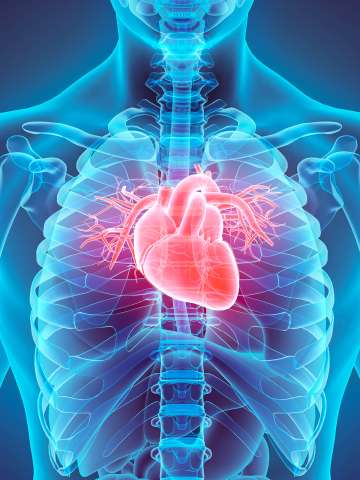Wondering where to go for reliable heart care? Find a Cardiologist near me today
Wondering where to go for reliable heart care? Find a Cardiologist near me today
Blog Article
Comprehending the Significance of Cardiology in Modern Health Care Solutions
Cardiology plays an essential function in modern health care, specifically as heart condition remains to be the leading reason of mortality worldwide. Developments in diagnostics and therapy have actually transformed person treatment, allowing earlier interventions and enhanced results. The shift in the direction of precautionary cardiology empowers people to handle their health and wellness proactively. As technology remains to progress, the combination of ingenious options might even more redefine cardiology's impact on public health, triggering a more detailed examination of arising trends and their implications.
The Occurrence of Cardiovascular Disease and Its Effect on Public Health
Although cardiovascular disease stays the leading reason of death around the world, its impact extends much beyond individual people to affect public health systems and economic climates. The high occurrence of cardiovascular disease places a substantial strain on medical care sources, necessitating raised funding for rehab, prevention, and therapy programs. Public health and wellness efforts must deal with danger aspects such as weight problems, cigarette smoking, and inactive way of lives, which add greatly to the rising incidence of heart conditions.Moreover, the financial worry related to heart problem is tremendous, encompassing not just direct clinical costs yet likewise indirect expenditures connected to lost productivity and early mortality. Neighborhoods encounter difficulties in managing these prices, frequently causing differences in healthcare accessibility and end results. As the population ages and lifestyle-related risks remain to intensify, the urgency for efficient cardiology interventions becomes extremely important. Addressing heart disease is not only an issue of private health and wellness yet additionally an important public health priority.
Breakthroughs in Heart Diagnostics and Imaging Techniques
Recent innovations in cardiac diagnostics and imaging techniques have actually revolutionized the area of cardiology, boosting the capability to check and spot cardiovascular disease. Methods such as cardiac MRI, CT angiography, and echocardiography have actually become progressively innovative, supplying thorough photos of heart frameworks and features. These techniques permit for the early recognition of conditions like coronary artery condition, cardiac arrest, and valvular disorders.Moreover, innovations in non-invasive diagnostics, such as wearable modern technology and remote surveillance devices, have empowered people and doctor. These tools assist in real-time tracking of heart rhythms and other crucial indications, causing prompt interventions. Furthermore, artificial intelligence is being incorporated right into imaging evaluation, boosting accuracy and effectiveness in diagnosis.
Developments in Therapy Alternatives for Heart Issues
Recent developments in cardiology have led to significant innovations in treatment options for heart problems. These include sophisticated surgical techniques that improve step-by-step outcomes and arising medications that supply new methods for therapy. As the area evolves, these innovations play a vital role in boosting client treatment and results.
Advanced Surgical Techniques
Innovations in medical techniques have transformed the landscape of cardiology, supplying brand-new wish for individuals with heart disease. Minimally invasive procedures, such as catheter-based interventions, have actually considerably lowered recovery times and health center stays. Strategies like robotic-assisted surgical procedure boost accuracy, permitting surgeons to browse complicated physiological structures with better precision. Furthermore, innovations in imaging technology promote real-time visualization throughout treatments, boosting results. Transcatheter aortic valve replacement (TAVR) exemplifies an advancement in treating aortic constriction, enabling shutoff replacement without open-heart surgical procedure. Additionally, hybrid techniques that integrate catheter-based and surgical methods supply customized remedies for various cardiac issues. These sophisticated medical techniques not just boost person safety yet additionally broaden treatment alternatives, underscoring the critical function of innovation in contemporary cardiology practices.
Arising Treatments and drugs
As the landscape of cardiology continues to advance, arising treatments and medications play a crucial function in enhancing treatment alternatives for heart conditions. Technologies such as novel anticoagulants and advanced lipid-lowering representatives have actually changed the management of heart diseases, substantially reducing client morbidity and death. In addition, the advancement of gene treatments and regenerative medicine provides appealing opportunities for dealing with conditions formerly considered permanent. Professional trials are continually revealing the efficacy of these treatments, pushing the boundaries of typical therapies. Furthermore, the combination of digital health modern technologies assists in customized medicine, allowing for tailored therapy strategies based upon genetic and way of living elements. Collectively, these advancements underscore the dynamic nature of cardiology, enhancing individual results and redefining standards of care in contemporary medical care.
The Duty of Preventive Cardiology in Patient Care
Preventative cardiology plays a vital function in individual care by concentrating on the identification of risk factors that add to heart condition. With way of living adjustment techniques and very early detection methods, doctor can properly lower the occurrence of cardiovascular occasions - Cardiologist near me. This proactive strategy not just boosts client end results but also promotes lasting wellness
Danger Element Identification
While heart diseases continue to be a leading reason for morbidity and mortality worldwide, reliable risk factor recognition acts as a foundation of preventive cardiology. Recognizing threat variables such as high blood pressure, hyperlipidemia, household, and diabetic issues background is vital for early treatment. Healthcare professionals utilize different evaluating approaches to evaluate these factors, enabling tailored safety nets. Furthermore, comprehending a person's way of living options, such as smoking cigarettes and physical lack of exercise, better educates risk evaluations. This comprehensive examination allows clinicians to develop individualized treatment strategies focused on mitigating threats. By focusing on risk variable recognition, medical care systems can improve person results and minimize the overall burden of cardiovascular illness, inevitably adding to improved public wellness techniques and source allowance.
Way Of Living Modification Strategies
A wide range of studies highlights the important role of way of life modification approaches in lowering cardio disease threat. These strategies include nutritional changes, raised exercise, cigarette smoking cessation, and weight administration. By adopting a heart-healthy diet regimen abundant in fruits, veggies, entire grains, and lean proteins, people can reduce cholesterol degrees and high blood pressure. Normal exercise strengthens the heart and boosts overall cardiovascular wellness. Additionally, quitting smoking cigarettes greatly decreases the danger of heart problem and improves recuperation rates for those with status quo. Weight monitoring additionally adds to cardiovascular health by mitigating various other risk elements such as diabetes mellitus and hypertension. Executing these lifestyle changes not only advertises individual well-being but also works as a cornerstone of preventive cardiology in client care.
Very Early Discovery Methods
Way of life adjustments greatly add to decreasing heart disease threats, however they are most efficient when coupled with early discovery techniques. Precautionary cardiology highlights the value of recognizing possible heart problems prior to they intensify right into severe conditions. Strategies such as blood pressure monitoring, cholesterol screening, and progressed imaging innovations like echocardiograms play critical roles in assessing cardio wellness. Biomarkers and hereditary screening additionally improve the precision of very early detection, enabling for customized preventative methods. Routine heart risk assessments empower doctor to interfere proactively, possibly stopping cardiovascular disease and strokes (Dr Garcia). By integrating these very early discovery approaches into routine treatment, patients can take advantage of timely way of life interventions and targeted treatments, inevitably boosting outcomes and boosting quality of life
Integrating Technology Into Cardiology Practices
As developments in technology continue to reshape various areas, the integration of ingenious devices and systems right into cardiology practices has become important for improving patient care and results. Telemedicine platforms allow cardiologists to keep an eye on individuals from another location, boosting access to care while decreasing the burden on health care facilities. Wearable tools, such as smartwatches, make it possible for constant heart rate monitoring, alerting both doctors and clients to possible problems in real-time. Furthermore, fabricated intelligence (AI) is being utilized to examine large quantities of heart information, helping in very early medical diagnosis and individualized therapy plans. Advanced imaging strategies, including 3D echocardiography, boost visualization of heart frameworks, causing much more accurate treatments. Digital health documents (EHRs) enhance individual info monitoring, making sure that cardiologists have instant accessibility to critical information. With each other, these technological developments are transforming cardiology, advertising proactive administration and improved health and wellness results for people with cardio conditions.
The Significance of Client Education and Interaction
Patient education and learning and engagement play a pivotal duty in the administration of cardiovascular health and wellness. By equipping people with knowledge concerning their problems, therapy alternatives, and lifestyle modifications, medical care providers equip individuals to take an active role in their care. This proactive strategy can you could look here cause enhanced adherence to prescribed medications, nutritional adjustments, and exercise programs, ultimately lowering the threat of complications.Engagement also cultivates a strong patient-provider relationship, encouraging open interaction and count on. When individuals feel notified and entailed, they are more probable to voice problems and ask inquiries, which can lead to far better medical results. Furthermore, educational resources, such as workshops or look at these guys digital systems, can improve understanding and promote self-management strategies. Overall, focusing on individual education and learning and involvement is vital for improving cardiovascular wellness, boosting high quality of life, and minimizing medical care prices related to heart diseases.
Future Fads in Cardiology and Their Prospective Influence

Frequently Asked Concerns
What Lifestyle Changes Can Lower Heart Problem Threat?
The existing inquiry addresses way of living adjustments that can greatly lower heart problem risk. Cardiology Jupiter. Adopting a balanced diet plan, participating in normal exercise, keeping a healthy weight, handling stress and anxiety, and avoiding tobacco can notably boost cardiovascular wellness
How Can I Identify Very Early Indicators of Heart Troubles?
Identifying very early indications of heart issues entails monitoring signs and symptoms such as upper body pain, lack of breath, fatigue, and uneven heartbeat. Timely understanding of these indicators can trigger essential clinical analysis and treatment for better outcomes.
What Are the Differences In Between Cardiologists and Cardiac Surgeons?
The differences between cardiologists and heart doctors lie in their roles; cardiologists primarily diagnose and take care of heart problems through non-invasive methods, while cardiac specialists execute surgeries to remedy architectural heart concerns. Each plays a vital, distinct duty.

Just how Commonly Should I Get My Heart Health Checked?
The regularity of heart medical examination varies based on specific danger variables. Typically, grownups must undertake assessments each to two years, while those with status quo might require even more regular evaluations as advised by health care experts.
What Duty Does Genetics Play in Heart Condition Danger?
Genes considerably influences cardiovascular disease risk, with domestic patterns suggesting inherited problems. Particular genetics can predispose individuals to hypertension, cholesterol issues, and various other cardiovascular troubles, highlighting the significance of genetic screening in evaluating heart health. Heart illness remains the leading reason of fatality internationally, its impact expands much past private clients to impact public health and wellness systems and economies. Public health and wellness efforts must deal with threat factors such as excessive weight, cigarette smoking, and sedentary way of lives, which contribute considerably to the increasing occurrence of heart conditions.Moreover, the financial concern associated with heart disease is enormous, encompassing not only straight clinical expenses but also indirect costs associated to lost productivity and early death. Preventive cardiology plays a necessary duty in client care by focusing on the recognition of risk elements that add to heart condition. Fabricated knowledge (AI) and machine understanding are boosting diagnostics and person monitoring, allowing early discovery of heart conditions. The differences between cardiologists and heart specialists exist in their roles; cardiologists mostly manage and identify heart conditions with non-invasive methods, while heart cosmetic surgeons do surgical procedures to correct architectural heart problems.
Report this page